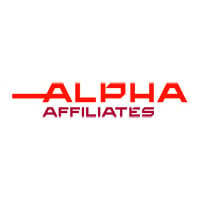I have spent almost as much time trying to come up with a perfect analogy to start this article as the good people of racing and betting have spent trying to come up with an agreement on the 55th Levy Scheme, and unfortunately we have all failed. The warring factions can’t be compared to the Loyalists and Republicans in Northern Ireland’s troubles (far too serious), or those wanting in or out of Europe (far too dull), or maybe even those suffering an abusive relationship, where each partner hurts the other but knows deep down they can’t live without each other (far too dark). The fact is that that their recent failure to agree the Levy by the deadline and so forcing it to be determined by the Secretary of State is more about the complexities of racing’s funding than two opposed groups culturally unwilling to compromise, though there is a scintilla of truth in that. The Levy is gambling’s Gordian knot, a two pipe problem as Sherlock Holmes would say.
For the uninitiated in possibly the longest argument ever had in gambling, the Levy is the mechanism through which British horseracing receives a significant part of its funding and provides for a substantial part of the prize money on offer. Set up just after off-course betting was legalised in 1960, it was to make up for the suspected shortfall that racing would suffer because the great unwashed could now bet on the High Street rather than bunk off work and bet at a racecourse. The Peppiatt Committee of 1960, which recommended it after much lobbying from racing, stated that it was not the case “that without a subsidy horseracing will rapidly decline or die”, but in fact, that British horseracing was in rude health and that the fresh money the levy would bring would “be an aid to improving it”. It was a fop to the toffs that now they didn’t own the vertical.
So a statutory series of annual schemes was created, whereby the bookmakers, to be represented by a Bookmakers Committee, would present to the Horseracing Betting Levy Board, made up of representatives of racing and neutral members appointed by government, a proposal about what they could afford to pay as a proportion of their profits on British horseracing and it is here, reminiscent of divorced fathers being required to own up to what they can afford to pay in alimony, that the seeds of annual turmoil were sown. Of the 55 Levy Schemes between 1962 and 2016/17, the Secretary of State has now been required to determine 13 of them (23.6%), the last being in 2010.
The 52nd (covering 2013/14), 53rd (2014/15) and 54th (2015/16) Schemes have been basically the same, requiring bookmakers to pay at a rate of 10.75% on British racing betting profits. In addition, the four largest retail bookmakers (William Hill, Ladbrokes, Coral and Betfred) have agreed to continue the underwriting of a combined contribution payable through the statutory Levy of not less than £47.5m in the 54th Levy Scheme period. Keeping up? This is not the glamour of Ascot or the fun of Cheltenham but it pays for it.
The problem with the 55th Scheme has been a disagreement over a voluntary (i.e. non-statutory) additional payment by the bookmakers to cover the fact that a significant amount betting on British racing is conducted online from offshore jurisdictions and so avoids the Levy. To counter this “leakage”, which horseracing estimates to be around £30m, the major racecourses have imposed a system of authorised betting partners, whereby only bookmakers making a Levy contribution, which racing has set at 7.5% for the 55th Scheme raising to 9% for the 57th Scheme, will be allowed to sponsor and advertise on course, a vital part of bookmaker marketing. It would appear that not all the bookmakers were willing to play ball with the voluntary payment and an offer that amounted to the equivalent of 5% was made, only to be rejected by racing, and no agreement on the Levy was reached.
Eminent lawyers point out that the Racing Right is fraught with competition law issues at both a UK and European levelAlthough my sources tell me that many stakeholders were sending messages that basically said “WTF!” at news of racing spitting out its dummy, in the big scheme of things, it is as understandable as it is disappointing. Both sides are performing to type and both sides are victims of a broken system.
In 1999, both the new boss of British racing, Peter Savill, and the civil service’s quinquennial review of Non-Departmental Public Bodies requested for the Levy to be abolished. The former because he realised that depending on bookmakers’ largesse was not the best way to fund racing in the future, the latter because government shouldn’t be involved in racing. Thus started racing’s attempt to replace the Levy with commercial agreements concerning the sale of its pre-race data and picture rights. These plans would be severely hindered by the intervention of the Office of Fair Trading (2001-03) and the European Court (2004), in a case against William Hill, who both ruled that racing, as a single body, trying to sell its products to the bookmakers was anti-competitive. New structures for racing and how it would sell its media had to be found. Hence why there is more than one set of pictures in betting shops today.
The Future Funding of Racing Review Group reported in 2005 that alternative options to the Levy were all fraught with problems and that it should be kept indefinitely until a workable solution could be found. Then starts a decade of racing and betting arguing it out over just how much the racing product was worth, the bookmakers having to pay for pictures and data on top of the Levy, while racing argued, at times hyperbolically, that the Levy should be calculated on every product gambled on in a betting shop, as it was racing that drew in the punters. All of this took place while the betting world changed. All the major bookmakers moved offshore and were not liable for Levy on bets struck on servers in Gibraltar or the Isle of Man and racing’s slice of the gambling pie reduced as less complicated gambling appealed to those in shops and online.
And this is where the nub of the problem is. Those in racing consider theirs to be a world class product needing, according to the guy who runs racing, British Horseracing Authority chairman Steve Harman, £150m to survive and grow. They believe it’s those that benefit from racing – the bookmakers – that should pay the lion’s share. There is no doubting that British racing is the best in the world, or that bookmakers benefit from racing, but for British bookmakers that offer a vast array of gambling products to a global audience, its importance to their customers may soon not be worth the price racing wants to charge.
This may well become glaringly apparent when, and if, the government implements its preferred option to replace the Levy – the Racing Right. This would allow racing to own the IP for its product and licence any betting on it. Racing would set a price and bookmakers of any jurisdiction would have to pay. This is seen as nirvana for racing but could easily be just another false dawn.
Eminent lawyers such as David Zeffman, of Olswang, have pointed out that the Racing Right is fraught with competition law issues at both a UK and European level and that a bookmaker legal challenge is certain. There are even some cynics who believe that the Racing Right was just a ploy to help Matthew Hancock get re-elected as the MP for West Suffolk, which includes the Newmarket racecourse. His best mate, the chancellor George Osborne, was the one announcing the Racing Right’s introduction, rather than the usual and more relevant Department of Culture, Media and Sport.
Those cynics are also thinking that racing’s rejection of the voluntary payment for digital betting, thus forcing the Secretary of State to get involved, is more about showing government that a replacement to the Levy is needed than anything to do with voluntary payments not being enough. The one thing that is for certain is that until a workable alternative to the Levy is found, racing and betting will have an annual argument based on one side’s dreams of winning a classic and the other side’s reality of what racing is really worth to them. My hunch is that it will be racing that is the loser in the long run.
Steve Donoughue is an industry expert who runs www.gamblingconsutant.co.uk and has been advising gambling companies and governments for 20 years.
This article appears in the February 2016 issue of Gambling Insider's Sports-Betting Focus


































